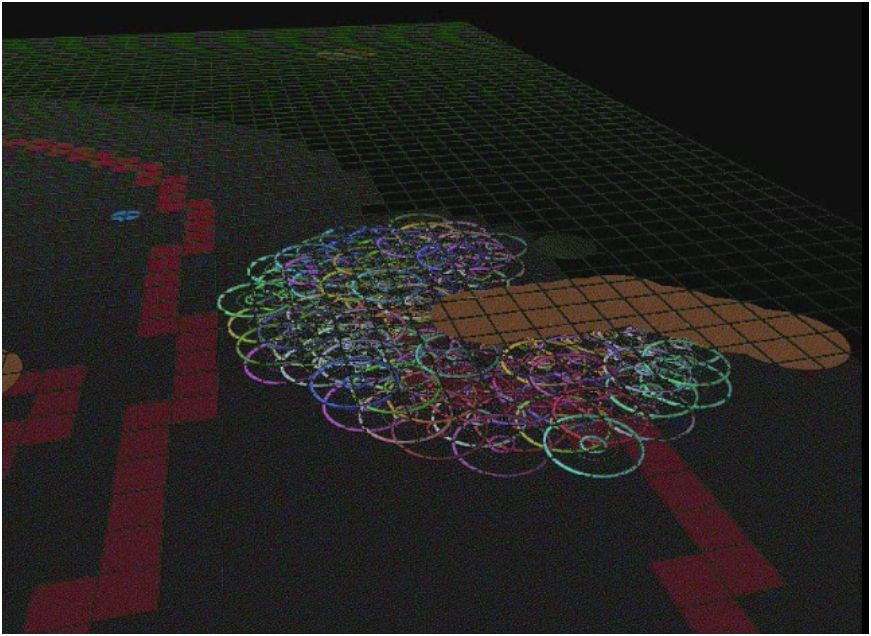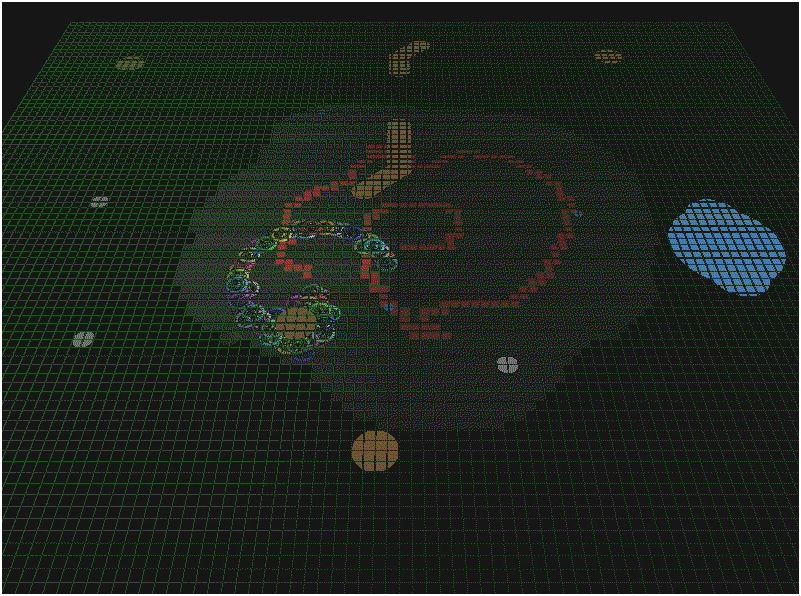In
this area of research I address multi-vehicle coordination and control
under network management constraints. Under my supervision, we have
created a control
architecture and quering system that enables the realtime control and
simulation of large groups of vehicles maintaining a network
topology while navigating through vast topological areas with
geographical constraints. These architecture combines reactive
prioritized
multi-task approaches with task-based planners. In the image below it
is shown and Illustration of a UGV/UAV exploration scenario.

Funding source: The Boeing Company
Years: 2008-2009
Resources: $350,000
Research coordinator: Dr. Luis Sentis
Student: Mike Mintz (MS, CS)

Funding source: The Boeing Company
Years: 2008-2009
Resources: $350,000
Research coordinator: Dr. Luis Sentis
Student: Mike Mintz (MS, CS)
OBOTICS
PUBLICATIONS

